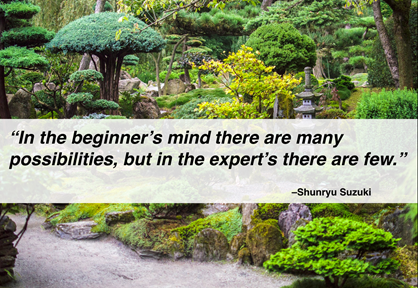7 Simple Techniques For Circular Dichroism
7 Simple Techniques For Circular Dichroism
Blog Article
The Ultimate Guide To Spectrophotometers
Table of ContentsNot known Incorrect Statements About Uv/vis The Single Strategy To Use For Circularly Polarized LuminescenceSpectrophotometers for BeginnersEverything about Circularly Polarized LuminescenceNot known Incorrect Statements About Circularly Polarized Luminescence

Although spectrophotometry is most frequently used to ultraviolet, visible, and infrared radiation, modern spectrophotometers can interrogate large swaths of the electro-magnetic spectrum, consisting of x-ray, ultraviolet, noticeable, infrared, and/or microwave wavelengths. Spectrophotometry is a tool that hinges on the quantitative analysis of particles depending upon how much light is taken in by colored compounds.
Uv/vis for Beginners
A spectrophotometer is frequently used for the measurement of transmittance or reflectance of services, transparent or opaque solids, such as sleek glass, or gases. Many biochemicals are colored, as in, they absorb noticeable light and therefore can be measured by colorimetric treatments, even colorless biochemicals can often be converted to colored substances ideal for chromogenic color-forming reactions to yield compounds ideal for colorimetric analysis.: 65 Nevertheless, they can likewise be developed to determine the diffusivity on any of the noted light varieties that normally cover around 2002500 nm utilizing various controls and calibrations.
An example of an experiment in which spectrophotometry is utilized is the determination of the balance constant of an option. A certain chain reaction within an option may take place in a forward and reverse instructions, where reactants form products and items break down into reactants. Eventually, this chemical response will reach a point of balance called a stability point.
Some Ideas on Uv/vis You Should Know
The amount of light that passes through the solution is a sign of the concentration of certain chemicals that do not enable light to go through. The absorption of light is due to the interaction of light with the electronic and vibrational modes of molecules. Each type of molecule has an individual set of energy levels connected with the makeup of its chemical bonds and nuclei and hence will take in light of specific wavelengths, or energies, resulting in distinct spectral residential or commercial properties.
Using spectrophotometers covers numerous clinical fields, such as physics, products science, chemistry, biochemistry. circularly polarized luminescence, chemical engineering, and molecular biology. They are extensively used in many markets consisting of semiconductors, laser and optical production, printing and forensic assessment, along with in laboratories for the study of chemical compounds. Spectrophotometry is often used in measurements of enzyme activities, decisions of protein concentrations, determinations of enzymatic kinetic constants, and measurements of ligand binding reactions.: 65 Ultimately, a spectrophotometer has the ability to determine, depending upon the control or calibration, what compounds exist in a target and exactly just how much through computations of observed wavelengths.
This would come as a service to the formerly developed spectrophotometers which were unable to soak up the ultraviolet correctly.
The Ultimate Guide To Uv/vis
It would be discovered that this did not give acceptable outcomes, therefore in Design B, there was a shift from a glass to a quartz prism which enabled better absorbance results - UV/Vis (https://pagespeed.web.dev/analysis/https-olisclarity-com/ft59obxjpp?form_factor=mobile). From there, Design C was born with an adjustment to the wavelength resolution which ended up having three units of it produced
It was produced from 1941 to 1976 where the rate for it in 1941 was US$723 (far-UV accessories were an option at additional expense). In the words of Nobel chemistry laureate Bruce Merrifield, it was "probably the most important instrument ever established towards the development of bioscience." Once it became ceased in 1976, Hewlett-Packard developed the very first commercially offered diode-array spectrophotometer in 1979 called the HP 8450A. It irradiates the sample with polychromatic light which the sample absorbs depending on its properties. Then it is transmitted back by grating the photodiode array which discovers the wavelength region of the spectrum. Ever since, the development and execution of spectrophotometry gadgets has increased tremendously and has actually ended up being one of the most innovative instruments of our time.

Some Known Details About Circular Dichroism
Historically, spectrophotometers use a monochromator consisting of a diffraction grating to produce the analytical spectrum. The grating can either be movable next or fixed. If a single detector, such as a photomultiplier tube or photodiode is utilized, the grating can be scanned step-by-step (scanning spectrophotometer) so that the detector can measure the light intensity at each wavelength (which will represent each "action").
In such systems, the grating is fixed and the strength of each wavelength of light is determined by a different detector in the variety. In addition, most modern mid-infrared spectrophotometers utilize a Fourier change strategy to get the spectral information - https://www.blogtalkradio.com/olisclarity1. This method is called Fourier change infrared spectroscopy. When making transmission measurements, the spectrophotometer quantitatively compares the fraction of light that passes through a recommendation service and a test option, then electronically compares the intensities of the two signals and computes the portion of transmission of the sample compared to the recommendation requirement.

Report this page